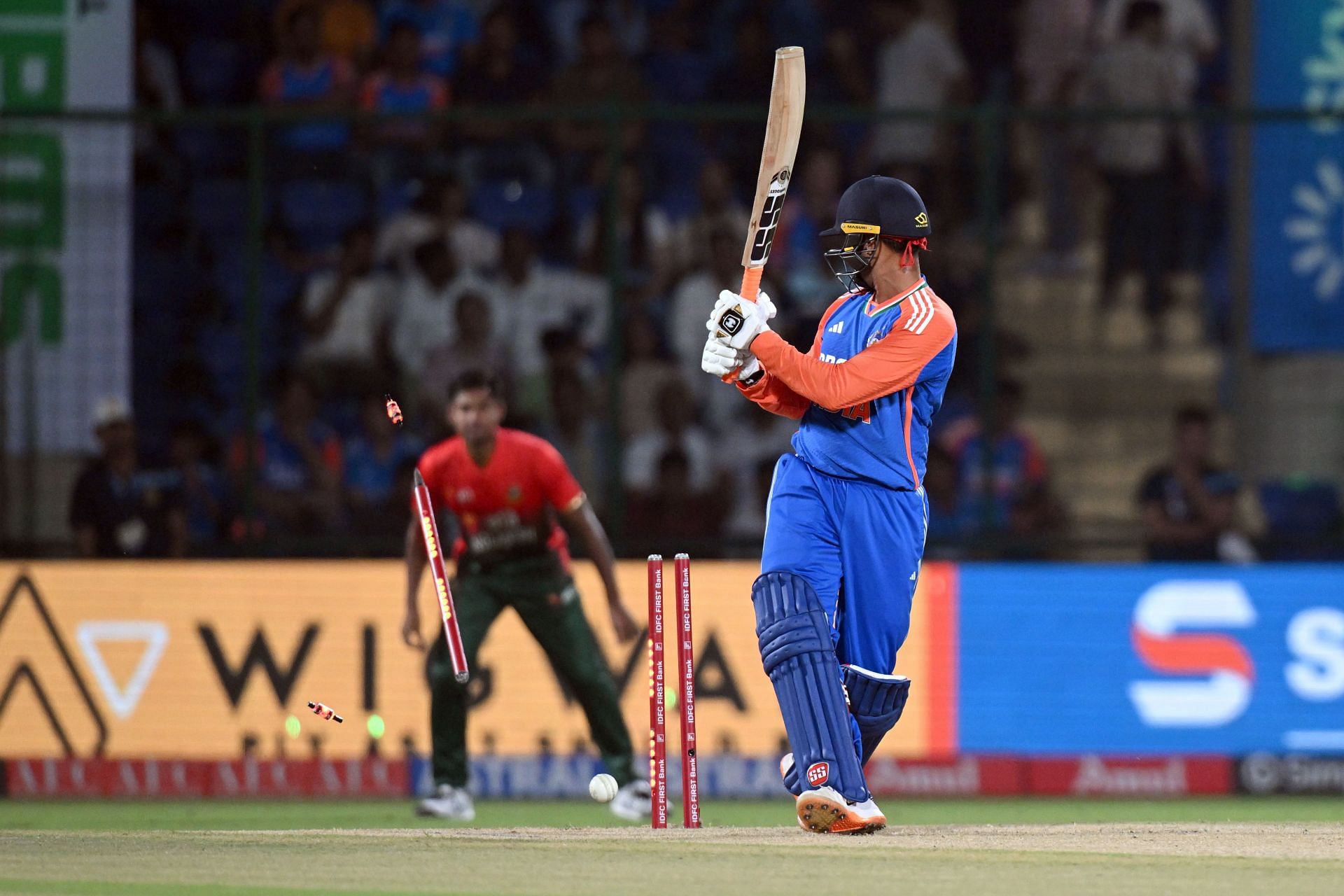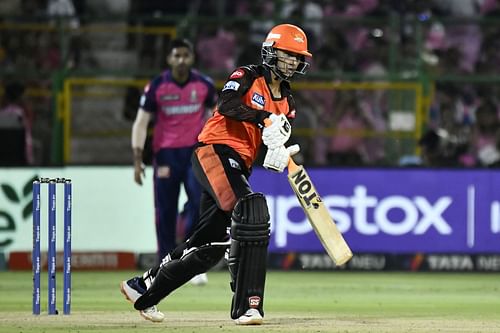
Explained: What is going wrong for Abhishek Sharma and why it's nothing to worry about
Talented all-rounder Abhishek Sharma, who entered the public imagination with his stellar showings for the Sunrisers Hyderabad in the Indian Premier League earlier this year, is going through a rut at the moment. He made his T20I debut for India against Zimbabwe in July this year and showed his class with a century in just his second outing.
However, Sharma's graph has gone down since that initial burst, and he has not been able to capitalize on the starts that he has usually received. After the 100 against Zimbabwe in Harare, his scores in international cricket read 10, 14, 16, 15, 4, and 7. This includes matches against two opponents - Bangladesh and South Africa. The last innings was in the first T20I against the Proteas in Durban on Friday, November 8.
On Friday, it may have seemed to many spectators that Sharma veritably threw his wicket away. Despite fellow opener Sanju Samson going great guns, the southpaw was tempted by a fullish and wide delivery from Gerald Coetzee to take on mid-off, only to spoon it to Aiden Markram who was running backwards. Against Bangladesh, while he got run out in the first T20I, he was beaten for pace in the second and third.
In the second match against the Bangla Tigers in Delhi, Sharma appeared to be keen on hitting across the line to the pacy Tanzim Hasan Sakib and paid the price by losing the line completely. In the final game in Hyderabad, Sharma was again caught lacking in technical temperament, after he decided to play the pull shot to Sakib but only ended up skying it for Mahedi Hasan to take comfortably at midwicket.
It is only right for well-wishers to feel concerned about his form and tongue-carvers to get ready with their knives, but Sharma's boom-or-bust international career so far has careened towards two spectaculars: either go all in or all out. It is unfortunate that despite the solid start he had against a hapless Zimbabwean attack, he has not been able to lodge a single half-century yet and averages 20 in eight innings.
However, the Indian team management, who seem hell-bent upon giving him opportunity after opportunity to prove his worth, expect him to pump runs into the game sooner or later. They back him based on the impressive strike rate that he has garnered so far: 164.35, and this seems to be his sole currency when runs and averages have both failed him big-time. With Gautam Gambhir at the helm, and VVS Laxman in charge temporarily, India are keen on flirting with danger like they have rarely done in the past, and Sharma's is the classic case report.
How can Abhishek Sharma regain his form?

All said and done, there is nothing that the Indian cricket fan would like to see more than Sharma regaining the form he had shown in the IPL and the early stages of his international career. However, his singular failures against raw pace may have added a tint of suggestion that he may yet lack the capability to express himself to his fullest potential at the biggest stage of them all. Does this point towards the lack of social graces the management showed when they picked a 23-year-old with just 24 first-class matches under his belt to wear India colors?
Famously groomed by one of the most outspoken of Punjab all-rounders, Yuvraj Singh, Sharma has more often than not thrown his wicket away at this level, and failed to match up with his technique on other occasions. The safe decision would be to send him back to play more red-ball and white-ball cricket at the domestic level to fine-tune his game, but the practical way would be to keep giving him opportunities until he proves to the selectors that he is not worthy of them anymore. For the time being, India will stick to Sharma.
Since the Amritsar-born lad must be keen on improving his form by hook or crook, he can do no better than to listen to one of the most saintly of cricket watchers in India, Sunil Gavaskar. The latter, one of the finest batters the world ever saw, would advise young batters who were struggling for form time and again to play with a straight bat and watch the ball closely in practice before going into a game scenario. Since the former option may not be conducive to the trigger-happy Sharma in white-ball cricket, he can at least try the latter in training before his next match.
While a lot will be written and said about him, there is indeed no reason to worry for Sharma, for he has shown in his short domestic and international career that he can come back from the abyss with all his strengths intact. This too should be seen as a minor dip in form and not a symptom of the deeper malaise that we referred to earlier. Most importantly, the way he is playing is owing to a philosophy that India want to adhere to in T20 cricket: to live by the sword, and be content dying by it too.
He is a natural stroke-maker who likes to play with a straight bat on most occasions, and this can work well in his favour if he decides to take some time for himself in his next innings and allow the ball to come on to him. Despite India's necessity for quick runs at the top, Sharma can well afford to take three to four balls to himself to assess the pitch and how well his body is moving before going for the kill. If he passes this self-examination, we will be sure to discover another great peak that he climbs for India soon enough.